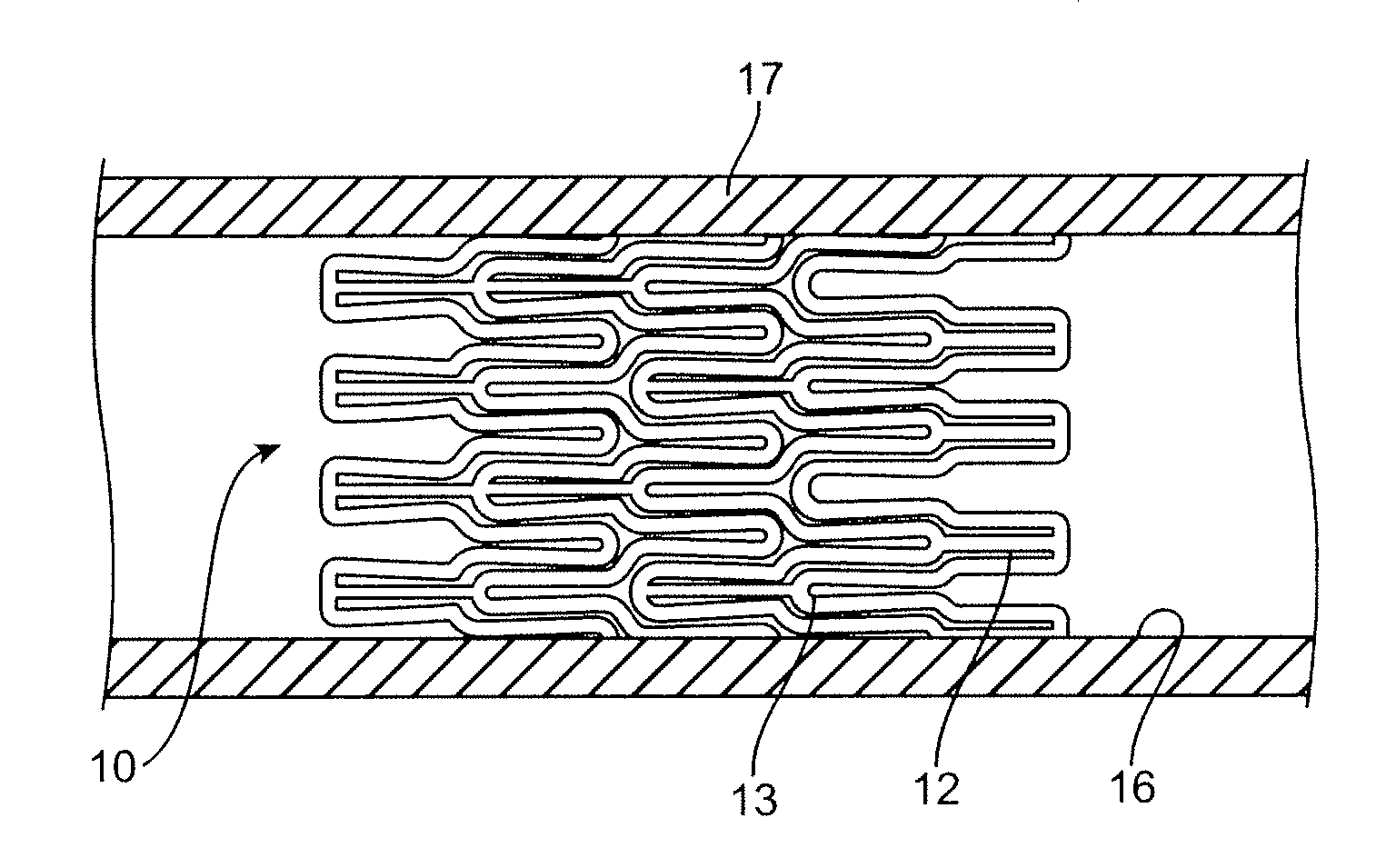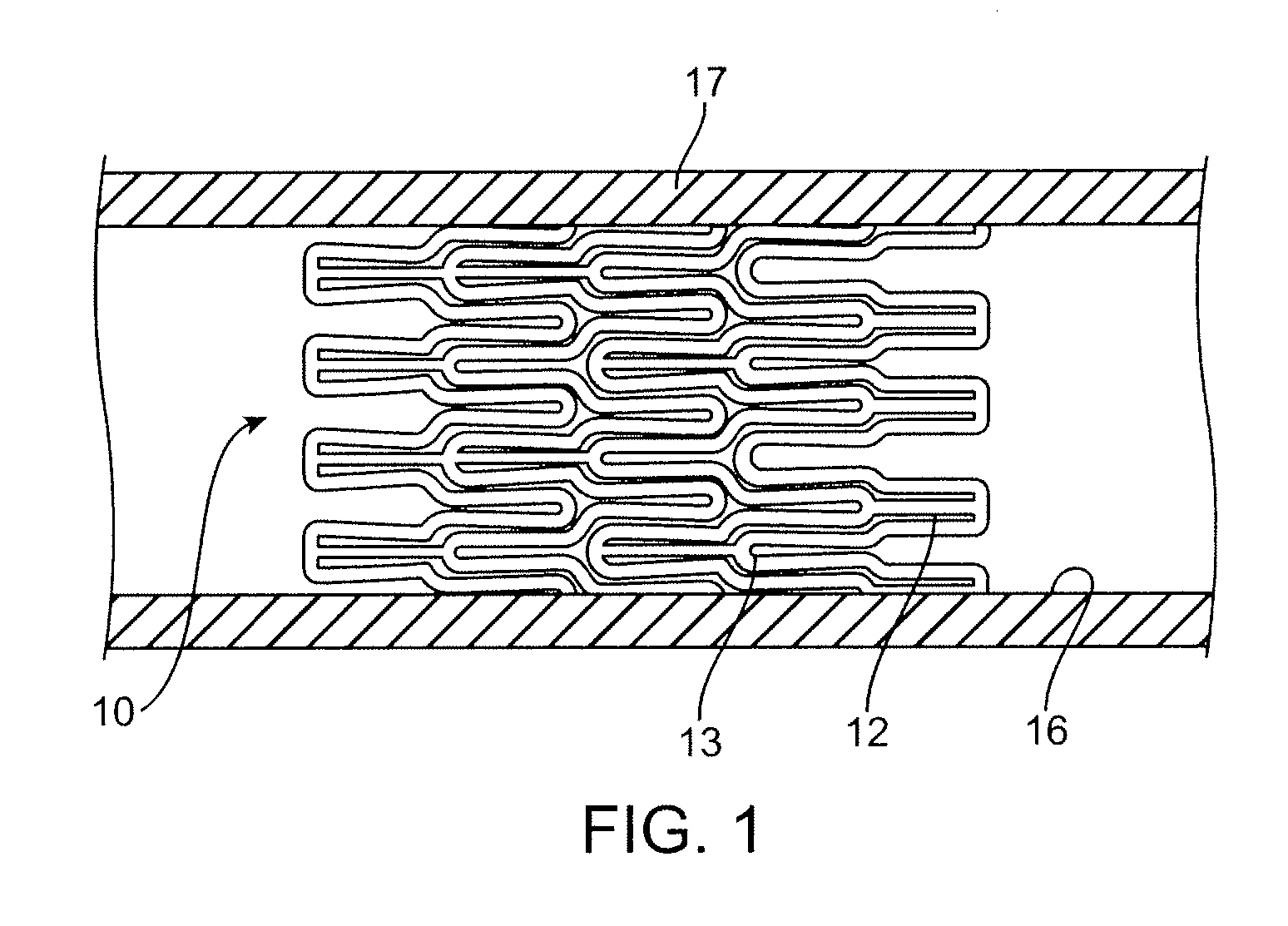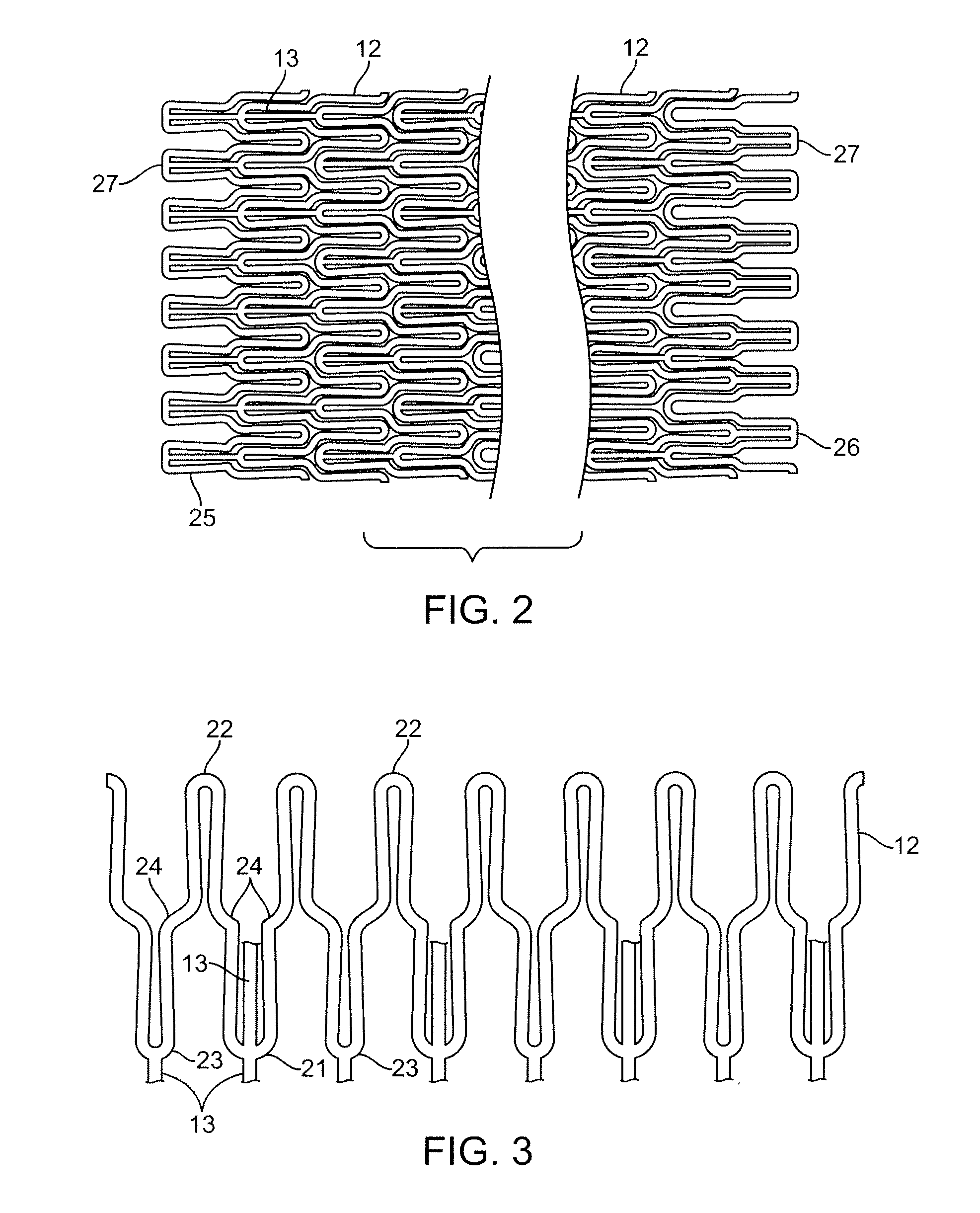Coated stent and method of making the same
a technology of drug delivery device and coating, which is applied in the direction of pharmaceutical containers, packaged goods, foodstuffs, etc., can solve the problems of gangrene and amputation, affecting the mobility of the limb, and often affecting the patient's health,
- Summary
- Abstract
- Description
- Claims
- Application Information
AI Technical Summary
Benefits of technology
Problems solved by technology
Method used
Image
Examples
example 1
[0145]A polymer solution containing about 4.0 mass % EVAL and the balance, a solvent blend of DMAC and pentane, with a mass ratio between DMAC and pentane of about 4:1 can be prepared. To prepare the polymer solution, EVAL can be combined with DMAC and the mixture can be stirred for about 2 hrs at a temperature of about 80° C. The solution can be applied onto a 13-mm TETRA stent (previously available from Guidant Corp., now Abbott Vascular) to form a primer layer. An additional stent to which the coating may be applied is the ABSOLUTE™: Self-Expandable Peripheral Nitinol Stent (available from Abbott Vascular). To apply the primer layer, a spray apparatus, such as an EFD 780S spray nozzle with a VALVEMATE 7040 control system, manufactured by EFD, Inc. of East Providence, R.I. can be used. The EFD 780S spray nozzle is an air-assisted external mixing atomizer. The composition can be atomized by air and applied to the stent surfaces. The atomization pressure can be about 0.1 MPa (15 psi...
example 2
[0149]A primer solution can be prepared and coated onto a 13 mm TETRA stent as described in Example 1. An additional stent to which the coating may be applied is the ABSOLUTE™: Self-Expandable Peripheral Nitinol Stent (available from Abbott Vascular). A drug-containing formulation can be prepared comprising about 4.0 mass % EVAL, about 2.0 mass % paclitaxel, and the balance, a solvent blend of DMAC and tetrahydrofuran (THF), the blend having a mass ratio between DMAC and THF of about 3:2. EVAL can be combined with DMAC and the mixture stirred for about 2 hours at a temperature of about 80° C. THF and paclitaxel can then be added to the EVAL solution.
[0150]The drug containing formulation can be sprayed onto the primed stent. In a manner identical to the application of the primer layer, nine spray passes can be performed, depositing about 20 μg of the wet formulation per each spray pass. The wet drug-polymer layer can then be baked in an oven at about 60° C. for about one hour, while ...
example 3
[0152]A polymer solution containing about 2.0 mass % of poly(butyl methacrylate) (PBMA) and the balance, a blend of acetone and xylene having a mass ratio between acetone and xylene of about 3:2 can be prepared. To prepare the polymer solution, PBMA can be combined with acetone and the mixture can be stirred for about 1 hour at 60° C., followed by adding xylene. The solution can be sprayed onto a stent to form a primer layer as described in Example 1. The PBMA solution can be applied to a 13-mm TETRA stent in a series of 10-second passes, to deposit about 10 μg of the polymer solution per spray pass. An additional stent to which the coating may be applied is the ABSOLUTE™: Self-Expandable Peripheral Nitinol Stent (available from Abbott Vascular). Between passes, the stent can be dried at ambient temperature for about 10 seconds using flowing air.
[0153]Five spray passes can be applied, followed by baking the wet primer layer in an oven at about 80° C. for about 30 minutes. As a resul...
PUM
| Property | Measurement | Unit |
|---|---|---|
| Fraction | aaaaa | aaaaa |
| Fraction | aaaaa | aaaaa |
| Time | aaaaa | aaaaa |
Abstract
Description
Claims
Application Information
 Login to View More
Login to View More - R&D
- Intellectual Property
- Life Sciences
- Materials
- Tech Scout
- Unparalleled Data Quality
- Higher Quality Content
- 60% Fewer Hallucinations
Browse by: Latest US Patents, China's latest patents, Technical Efficacy Thesaurus, Application Domain, Technology Topic, Popular Technical Reports.
© 2025 PatSnap. All rights reserved.Legal|Privacy policy|Modern Slavery Act Transparency Statement|Sitemap|About US| Contact US: help@patsnap.com



